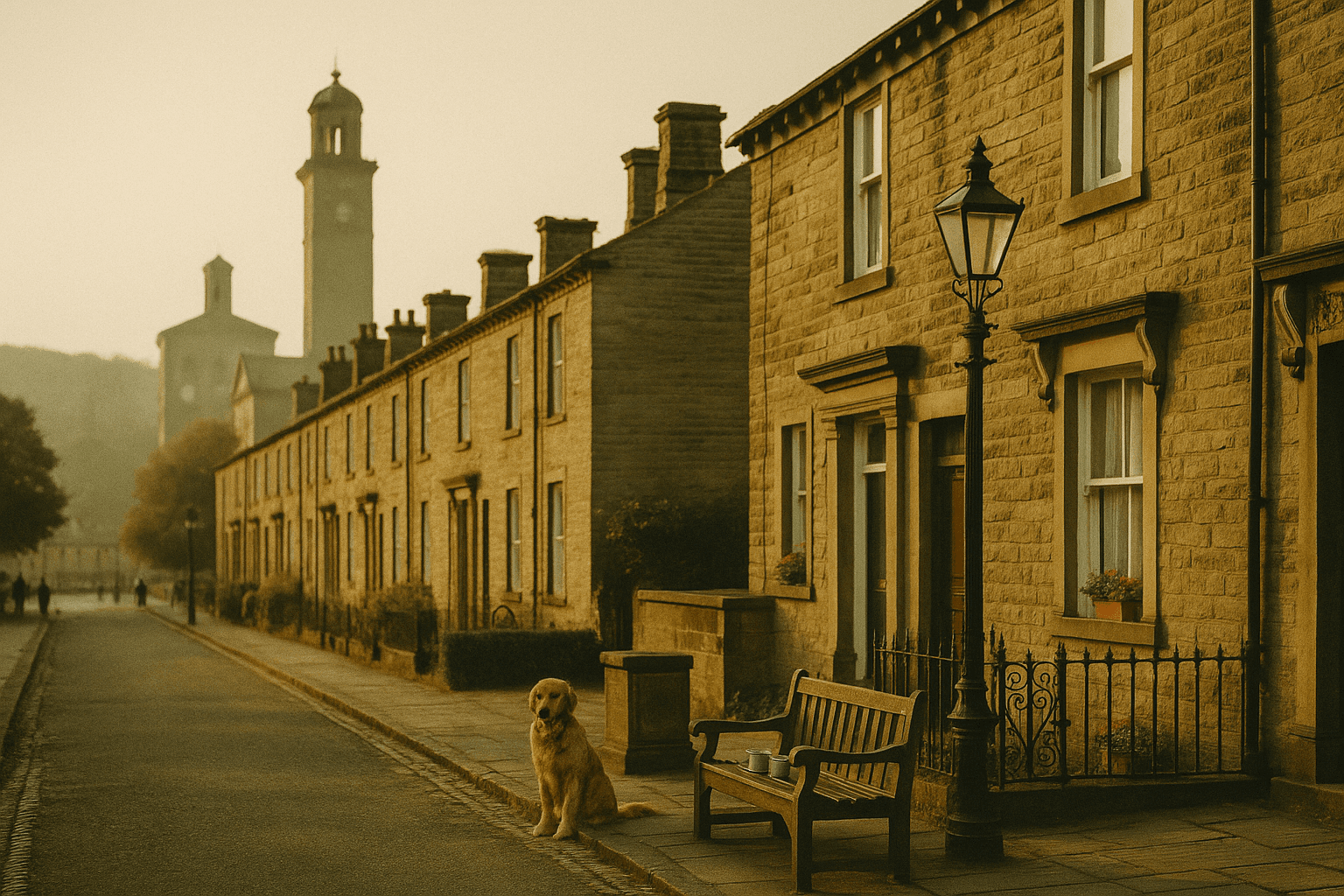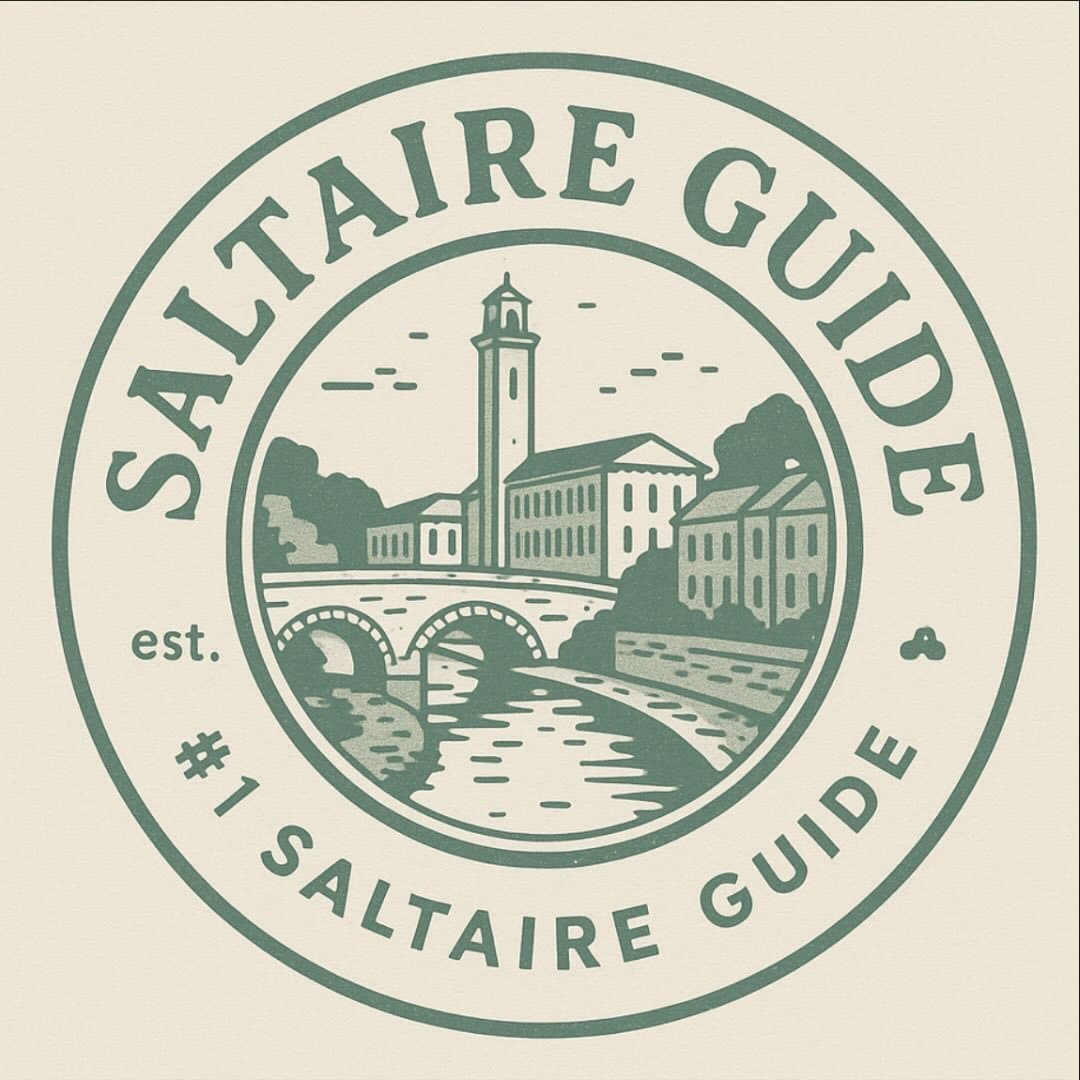Saltaire history timeline
The definitive chronology of Saltaire: from Titus Salt’s early life and the founding of the mill and model village to 20th-century change, 1980s revival and UNESCO World Heritage status.
- Updated: 2025-10-12
- Criteria (ii) & (iv)
- Original maps & sources

Before the village & early public life (to the 1850s)
Context for Saltaire’s creation: the explosive growth of Bradford’s wool industry, Salt’s early innovations and public roles, and the decision to build a healthier, planned community alongside a consolidated mill.
Birth of Titus Salt
Titus Salt is born in Morley, Yorkshire. He later becomes a leading worsted manufacturer, politician and philanthropist, best known for founding Saltaire.
Mayor of Bradford (1848–1849)
Salt serves as the second Mayor of Bradford, pushing for civic improvement and cleaner industry. He remains deeply engaged in local public life.
Member of Parliament for Bradford (1859–1861)
Salt is elected Liberal MP for Bradford, resigning in 1861 due to health. His public service complements his industrial leadership.
Building Saltaire under Sir Titus Salt (1851–1876)
The founding decades: mill construction, hierarchical housing, church, institute, hospital and almshouses, and the creation of a riverside park — a unified plan of work, welfare and culture.
Site chosen on the River Aire
Salt selects land by the Aire, railway and canal to consolidate production away from polluted Bradford and to build new worker housing and civic amenities.
Opening of Salts Mill (first phase)
Salts Mill opens on Salt’s 50th birthday. The vast mill anchors a planned village that grows in stages across the 1850s–60s.
Saltaire Congregational Church completed
A landmark Italianate church (now URC) with mausoleum; among the most significant individual buildings in the village’s unified plan.
Almshouses & hospital opened
Sir Titus Salt’s Almshouses and Infirmary open on Victoria Road, expanding the social provision of the model village.
Salt made a Baronet
Titus Salt is created a baronet “of Saltaire and Crow Nest”, formalising national recognition of his achievements.
Saltaire Institute (now Victoria Hall)
The Saltaire Club & Institute opens as a centre for education and recreation, later known as Victoria Hall.
Saltaire Park (now Roberts Park) opens
Designed by William Gay, the 14-acre park opens to the public across the river Aire; later renamed Roberts Park.
Death of Sir Titus Salt
Salt dies aged 73. Leadership of the company passes to his sons; the built village is essentially complete.
After Salt: ownership, philanthropy & park renaming (1877–1920)
The Salt family era ends; a consortium including James Roberts acquires the enterprise, commissioning the statue of Salt and gifting the park (with its present name) to Bradford in 1920.
Original firm wound up; sale of assets follows
Sir Titus Salt, Sons & Co. goes into voluntary liquidation; a consortium acquires the business the following year.
Consortium purchase including James Roberts
Four Bradford businessmen buy the mill and village; James Roberts later becomes sole owner (1899/1902 accounts vary by source).
Titus Salt statue added in the park
A bronze statue of Sir Titus Salt is erected on the main promenade (commissioned by Sir James Roberts).
Park renamed & gifted to Bradford
After earlier disputes, Sir James Roberts gifts the park to Bradford Corporation and names it Roberts Park in memory of his son Bertram Foster Roberts.
20th century industry, change and closure (1918–1986)
From interwar adjustments and ownership changes to the end of large-scale textile manufacture in 1986 — setting the stage for a new kind of life for the buildings.
Sale of company by Sir James Roberts
Roberts sells the Salts business for £2 million to a new consortium; later floated as Salts (Saltaire) Ltd (1923).
Village sold to Bradford Property Trust
Private ownership changes reflect evolving industrial and housing economics in the interwar years.
Textile production ceases at Salts Mill
Manufacturing ends; the huge mill complex stands largely vacant before a new era of adaptive reuse begins.
Jonathan Silver buys Salts Mill
Entrepreneur Jonathan Silver purchases the derelict complex and begins a pioneering regeneration, opening the 1853 Gallery dedicated to David Hockney.
Revival, culture and UNESCO World Heritage (1987–today)
Jonathan Silver’s 1987 purchase sparks a celebrated regeneration; by 2001, UNESCO inscription recognises the village’s completeness and influence. Conservation and lively reuse continue.
UNESCO World Heritage inscription
Saltaire is inscribed under criteria (ii) and (iv) as an exceptionally complete model industrial village of the later 19th century.
Roberts Park restoration
Major restoration works deliver long-term conservation and public realm improvements, supported by lottery funding.
Quick answers
Q1.When did Saltaire become a UNESCO World Heritage Site?
December 2001. It is inscribed under cultural criteria (ii) and (iv) for its completeness as a model industrial village and influence on planning.
Q2.Who owned Saltaire after Titus Salt?
A four-man consortium bought the mill and village in 1893; James Roberts became sole owner by 1899/1902 (sources vary). He sold the company in 1918.
Q3.When did Roberts Park get its current name?
In 1920, when Sir James Roberts gifted the park to Bradford and renamed it to commemorate his son, Bertram Foster Roberts.
Q4.When did textile production end at Salts Mill?
1986. The mill was then bought by Jonathan Silver in 1987 and reinvented as a cultural and commercial hub with the 1853 Gallery.
Sources
We prioritise primary and official sources. For full architectural detail, also see Historic England entries and Bradford’s Conservation Area guidance.
- UNESCO World Heritage Centre — Saltaire (Official)
Criteria, brief synthesis and official status.
- UNESCO Nomination File (PDF excerpt)
Historical summary: ownership changes, dates, significance.
- Bradford Council — WHS information & history
Local authority overview and links to policy/management.
- Saltaire Collection (official local archive)
Biographies, owners/managers timeline, buildings.
- Roberts Park — history and opening date
Designer, 1871 opening, later restoration.
- Victoria Hall / Saltaire Institute
Design, purpose and opening.
- About Salts Mill (official)
1986 closure; 1987 purchase & 1853 Gallery.
